Thank you! Your submission has been received!
Oops! Something went wrong while submitting the form.
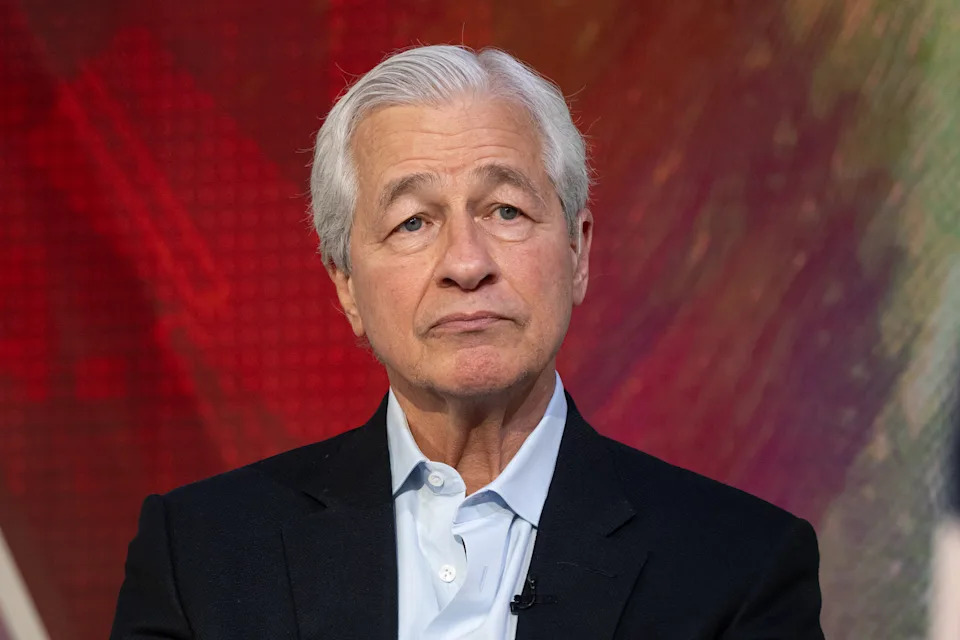
JPMorgan gets a dealmaking boost as Wall Street recovered from tariff tumult
Key Points
- JPMorgan Chase reported better-than-expected second-quarter earnings, with investment banking revenue up 8% to $2.5 billion, driven by mergers and equity underwriting.
- Total net income for the quarter was $15 billion, a 17% drop from last year due to a one-time Visa share gain in 2023, though adjusted profits rose 9% to $14.2 billion.
- CEO Jamie Dimon noted improved market sentiment and a resilient U.S. economy, while cautioning about risks from tariffs, trade uncertainty, and geopolitical issues.
- Trading revenue increased by 8% to $8.9 billion, and the bank raised its full-year net interest income guidance by $1 billion to $95.5 billion.
- Other banks like Wells Fargo and Citigroup also saw investment banking fee increases of 10% and 13%, respectively, reflecting a broader industry recovery.
Summary
JPMorgan Chase exceeded expectations in its second-quarter earnings, reporting a net income of $15 billion, despite a 17% year-over-year decline influenced by a one-time Visa share gain in 2023. Adjusted profits, however, rose 9% to $14.2 billion. Investment banking revenue grew 8% to $2.5 billion, fueled by mergers and equity underwriting, while trading revenue also increased 8% to $8.9 billion. CEO Jamie Dimon highlighted a slow start that gained momentum with improving market sentiment and a resilient U.S. economy, though he warned of risks from tariffs, trade uncertainty, and geopolitical tensions. The bank raised its full-year net interest income forecast by $1 billion to $95.5 billion. Meanwhile, other major banks like Wells Fargo and Citigroup reported investment banking fee growth of 10% and 13%, respectively, signaling a sector-wide recovery from earlier market gloom caused by President Trump’s "Liberation Day" tariffs. Despite volatility, Wall Street trading desks benefited from increased investor activity. JPMorgan’s stock remained flat, while Wells Fargo’s dropped over 4% after lowering its 2025 guidance, and Citigroup saw a slight uptick. This earnings season reflects cautious optimism as dealmaking rebounds and regulatory constraints ease under the Trump administration.
yahoo
July 15, 2025
Stocks

June inflation expected to show tariff-driven uptick as Trump escalates trade threats
Key Points
- June's Consumer Price Index (CPI) is projected to show a year-over-year increase of 2.6%, up from 2.4% in May, with a monthly rise of 0.3% compared to 0.1% previously.
- Core CPI, excluding food and energy, is expected to rise 2.9% annually and 0.3% monthly, indicating a slight acceleration from May's figures.
- Economists anticipate a reversal in falling car and apparel prices, potentially driving core inflation higher, amid concerns over the impact of President Trump's proposed tariffs.
- New tariffs ranging from 15% to 50% on imports from various countries, including Canada, Mexico, and the EU, are raising questions about future inflation and Federal Reserve rate decisions.
- Analysts from Wells Fargo, Bank of America, and Goldman Sachs predict a gradual increase in core goods inflation due to tariffs, though broader inflation pressures may ease later in the year.
Summary
The upcoming June Consumer Price Index (CPI) report, set for release on Tuesday, is expected to reflect a faster pace of inflation, with a projected year-over-year rise of 2.6% compared to 2.4% in May, and a monthly increase of 0.3%. Core CPI, excluding volatile food and energy prices, is forecasted to edge up to 2.9% annually. This comes as President Trump’s proposed tariffs, ranging from 15% to 50% on imports from countries like Canada, Mexico, and the EU, raise concerns about their impact on consumer prices. Economists note a potential reversal in declining car and apparel prices, which could push core inflation higher. Amid renewed trade tensions, the Federal Reserve’s rate-cutting path remains uncertain, though markets expect rates to hold steady for now. Analysts from Wells Fargo, Bank of America, and Goldman Sachs suggest tariffs will likely contribute to a gradual rise in core goods inflation, driven by factors like rebounding used car prices and broader cost increases. However, they anticipate limited pass-through to consumers and expect inflation pressures to cool later in the year due to softening housing and labor market dynamics. The June CPI data is seen as a critical indicator of whether inflation is strengthening, though not yet at a level to alarm Fed officials.
yahoo
July 15, 2025
Stocks

Nvidia to resume sales of AI chip to China as CEO visits Beijing
Key Points
- Nvidia plans to resume sales of its H20 AI chip to China, filing applications with the U.S. government for licenses, which it expects to receive soon.
- The company has faced U.S. export controls due to national security concerns, resulting in a $15 billion revenue loss and a $5.5 billion inventory write-off.
- Nvidia introduced a new AI chip, the RTX Pro GPU, designed to comply with U.S. export regulations for the Chinese market.
- CEO Jensen Huang emphasized the importance of the Chinese market during his visit to Beijing, highlighting its size, dynamism, and innovation.
- Despite easing U.S.-China tensions, Chinese companies are diversifying supply chains to mitigate risks from ongoing uncertainties.
Summary
Nvidia announced plans to resume sales of its H20 AI chip to China, following U.S. export restrictions that previously halted sales due to national security concerns, costing the company $15 billion in revenue and a $5.5 billion inventory write-off. The company is seeking U.S. government licenses to restart deliveries and has developed a new, compliant AI chip, the RTX Pro GPU, for the Chinese market. CEO Jensen Huang, visiting Beijing, underscored China’s critical role as a massive and innovative market during a supply chain expo. Despite facing competition from Chinese firms like Huawei and ongoing geopolitical uncertainties, Nvidia remains committed to the region, which accounted for 13% of its $17 billion revenue last fiscal year. Huang’s visit coincides with easing U.S.-China tensions, including relaxed rare earth export controls by China and resumed U.S. chip design software services. However, U.S. senators have urged caution regarding engagements with Chinese military or intelligence-linked entities. Analysts note that while the H20 ban pause offers relief, Chinese companies are diversifying supply chains to safeguard against future disruptions.
Anne Marie Roantree and Che Pan
July 15, 2025
Stocks
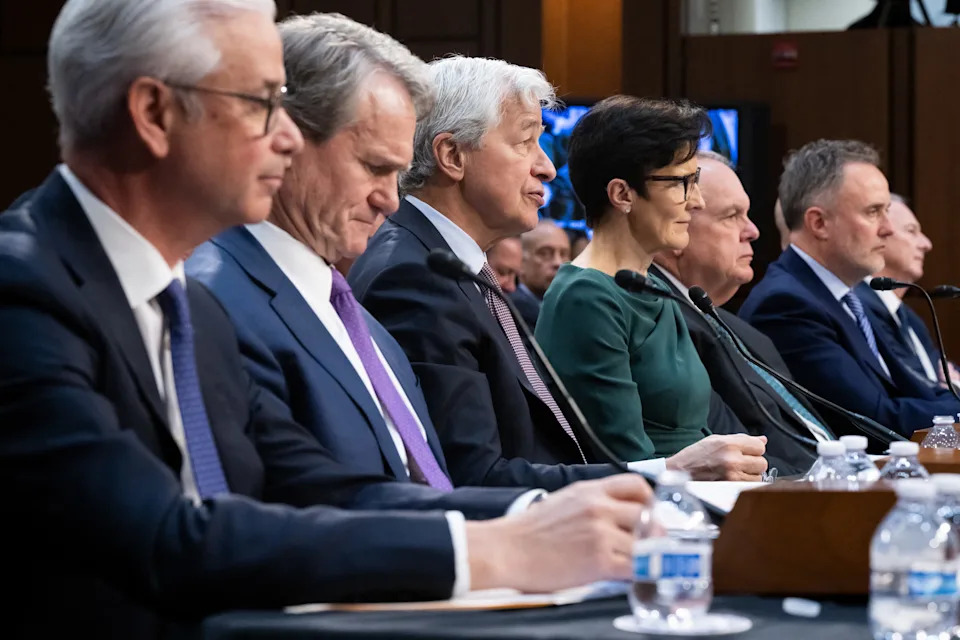
Big banks are trying to put Trump tariff tumult in their rear-view mirror
Key Points
- Optimism Replaces Gloom: The mood around major U.S. banks has shifted from pessimism to cautious optimism as they approach the new earnings season, following a challenging first quarter marked by market uncertainty and tariff-related volatility.**
- Strong Market Performance: Recent successful IPOs, mergers, and loosened capital rules by the Trump administration have bolstered the banking sector, with trading desks benefiting from market volatility.**
- Record Highs and Investor Confidence: After passing Federal Reserve stress tests, many big banks announced stock buybacks and dividends, leading to record-high stock prices for JPMorgan, Goldman Sachs, and Morgan Stanley on July 3.**
- Anticipated Earnings Beats: Analysts predict that banks like JPMorgan and Goldman Sachs may exceed previous investment banking guidance due to a strong recovery in the latter half of the quarter.**
Summary
The atmosphere surrounding the nation's largest banks has transformed from gloom to measured optimism as they head into the latest earnings season, starting with reports from JPMorgan Chase, Wells Fargo, and Citigroup. Three months ago, the sector faced uncertainty due to a dealmaking freeze and market turmoil following President Trump's "Liberation Day" tariff announcement. However, recent developments, including successful IPOs, mergers, and relaxed capital rules from the Trump administration, have revitalized the industry. Market volatility has even benefited trading desks, while stock buybacks and dividends post-Federal Reserve stress tests have driven investor enthusiasm, with JPMorgan, Goldman Sachs, and Morgan Stanley hitting record highs on July 3. Analysts are optimistic, predicting that some banks may surpass investment banking guidance, reflecting a strong recovery in the quarter's latter half. Investors are eager to hear confirmation that the challenges of April are behind and that the positive momentum will continue.
yahoo
July 14, 2025
Stocks
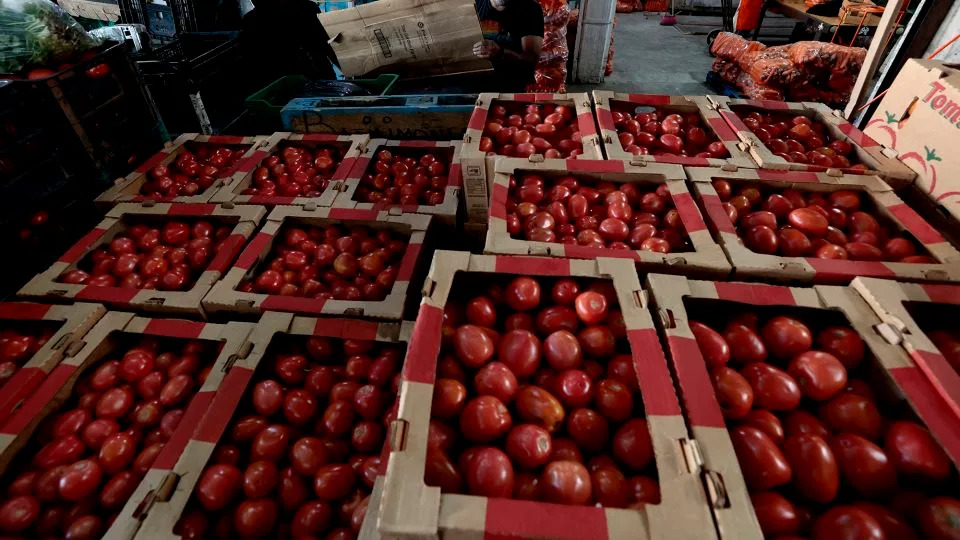
US tomato prices could jump as soon as Monday amid Mexico tariff threat
Key Points
- Tomato Tariffs Threaten Businesses: New 20.9% tariffs on Mexican tomato imports, set to replace a long-standing US-Mexico trade agreement on July 14, could drive up prices, risking bankruptcy for small businesses like Teresa Razo’s Argentine-Italian restaurants in Southern California.**
- Consumer Impact: Tomato prices for US consumers, currently around $1.70 per pound, may increase by about 10%, potentially reducing demand by 5%, according to agribusiness professor Timothy Richards.**
- Trade Policy Controversy: The tariffs, part of President Trump’s unpredictable trade policies, aim to combat “dumping” of cheap Mexican tomatoes, though Mexican growers argue the agreement has been largely upheld and violations are minimal.**
- Mixed Business Strategies: While some companies like Heinz and DiGiorno avoid tariffs by using US-grown tomatoes, others like Appollonia’s Pizzeria may absorb costs or switch suppliers seasonally, adding to operational stress.**
Summary
The impending 20.9% tariffs on Mexican tomato imports, set to replace a nearly three-decade-old US-Mexico trade agreement on July 14, are causing alarm among US businesses and consumers. Restaurant owner Teresa Razo fears bankruptcy for her Southern California eateries within three months due to rising costs, as tomatoes are essential for her dishes. Consumer prices, currently at $1.70 per pound, could jump by 10%, potentially curbing demand. The tariffs, part of President Trump’s erratic trade policies, aim to protect US growers from “dumping” by Mexican producers, though Mexican growers like Walberto Solorio argue the agreement has been mostly honored. US growers, represented by Robert Guenther, claim the tariffs are overdue to safeguard domestic markets. Businesses face varied impacts: some, like Heinz, use domestic tomatoes and avoid tariffs, while others, like Appollonia’s Pizzeria, may absorb costs or juggle suppliers. The uncertainty breeds “instability” and “fear” among small business owners like Razo, who are bracing for price hikes or sourcing alternatives amidst a chaotic trade landscape.
yahoo
July 14, 2025
Stocks

Trump tariffs live updates: Canada, EU, Mexico set to be hit with 30% to 35% rates as Trump amps up threats
Key Points
- Trump's Tariff Agenda: President Trump is implementing new tariffs starting in August, with rates ranging from 15% to 50% on goods from various countries, including 35% on Canada, 30% on Mexico and the EU, and 50% on Brazil and copper imports.**
- Impact on Trade Partners: Over 20 trade partners received tariff letters, with specific deals like Vietnam facing a 20% tariff (down from a threatened 46%) and potential reductions for India below 20% under a framework deal.**
- EU Response: The EU has delayed retaliatory tariffs on $24.5 billion of US exports until early August to negotiate with the Trump administration after a 30% tariff threat, aiming for a resolution.**
- Economic Fallout: Tariffs are affecting industries and companies, such as the closure of Michigan’s Howard Miller Co. due to increased costs, and creating uncertainty in sectors like tech and coffee with potential price hikes and supply chain disruptions.**
- Global Reactions: Leaders like German Chancellor Friedrich Merz warn that tariffs could severely impact export industries, while markets remain jittery over tariff risks and their broader economic implications.**
Summary
President Trump is advancing his tariff agenda, announcing new duties on imports starting in August, ranging from 15% to 50% across various countries. This includes 35% on Canadian goods, 30% on Mexico and the EU, and 50% on Brazilian goods and copper imports critical for power grids and tech. Over 20 trade partners received tariff letters, with Vietnam securing a reduced 20% rate and India potentially facing under 20% under a framework deal. The EU delayed retaliatory tariffs on $24.5 billion of US exports to negotiate a solution, while German leaders warn of severe impacts on export industries. The tariffs are already causing economic fallout, with Michigan’s nearly century-old Howard Miller Co. closing due to rising costs, and creating uncertainty in tech and coffee markets, where companies like Nvidia and Apple face additional pressures. Global markets remain nervous, with potential price increases and supply chain disruptions looming, as leaders and analysts grapple with the broader implications of Trump’s trade policies on economies and consumer wallets.
yahoo
July 14, 2025
Stocks
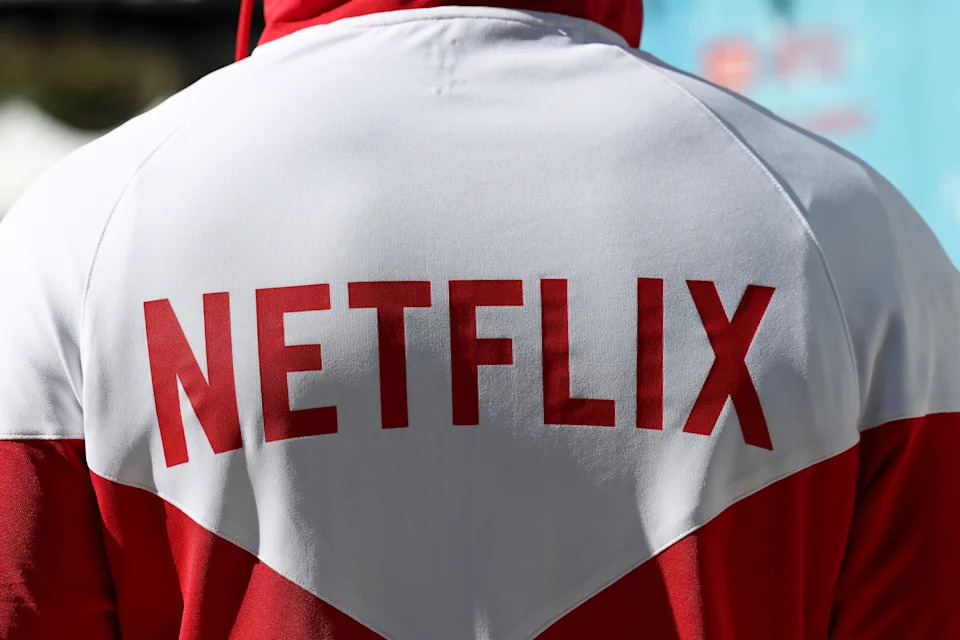
Inflation data, big bank earnings, and Netflix results: What to watch this week
Key Points
- Inflation Data: Tuesday's Consumer Price Index (CPI) release will be crucial for investors and policymakers, influencing the Federal Reserve's upcoming interest rate decision.**
- Earnings Season: Major US banks, Netflix, ASML, and Taiwan Semiconductor will report earnings, providing insights into banking, tech, and AI chip sectors.**
- Market Expectations: Analysts predict a 5% earnings growth for the S&P 500 in Q2, the slowest since Q4 2023, with stronger growth expected in Q3 (7.3%) and 2026 (13.9%).**
- Tariff Impact: Recent tariff announcements by Trump, including on Canada and higher blanket tariffs, have had minimal market disruption compared to earlier reactions.**
- Federal Reserve Outlook: Inflation data and tariff uncertainties are likely to keep the Fed on hold, with low odds (4.7%) of a rate cut this month despite Trump's calls for lower rates.**
Summary
Stocks are hovering near record highs despite a flurry of trade announcements and tariff policies under President Trump, which have had a muted impact on markets recently compared to earlier volatility. Key economic data, including Tuesday's Consumer Price Index (CPI), will shape expectations for the Federal Reserve's next interest rate decision, though inflation trends and tariff uncertainties suggest the Fed will remain cautious, with only a 4.7% chance of a rate cut this month. Earnings season kicks off with major US banks, Netflix, ASML, and Taiwan Semiconductor reporting, offering insights into banking, tech, and the AI chip boom. Analysts expect a modest 5% earnings growth for the S&P 500 in Q2, the slowest since late 2023, but anticipate stronger growth in Q3 (7.3%) and beyond. Wall Street has revised S&P 500 year-end targets upward, with Goldman Sachs at 6,600 and Bank of America at 6,300, driven by robust corporate earnings, especially in tech and communication sectors. Despite tariff-related challenges, market resilience and corporate strength continue to bolster investor confidence.
yahoo
July 13, 2025
Stocks
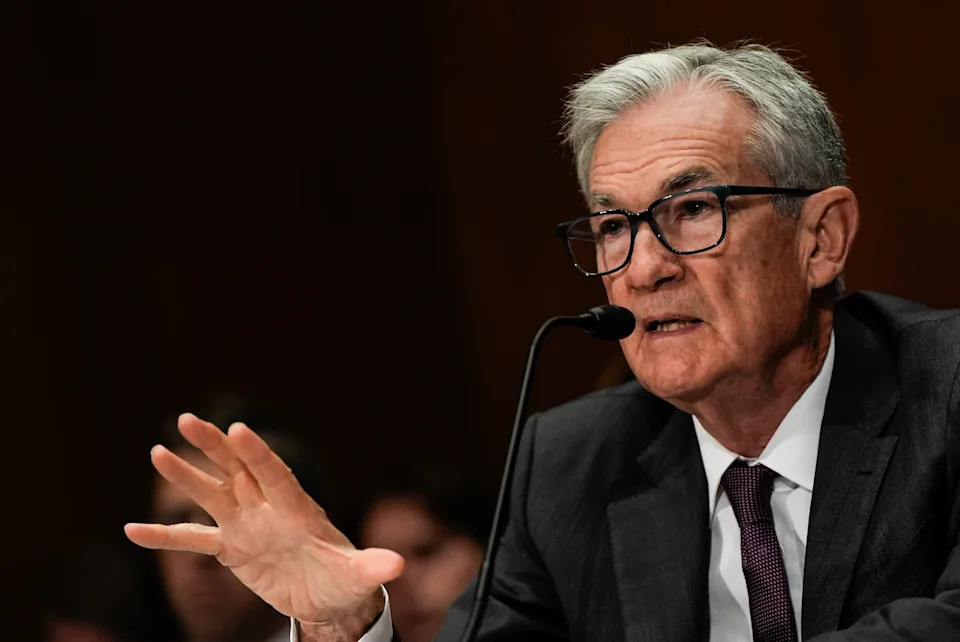
'That's the million-dollar question': Wall Street divided on Fed rate cuts as tariff uncertainty lingers
Key Points
- Nvidia's Milestone: Nvidia (NVDA) achieved a trillion-dollar valuation milestone amidst record-breaking stock market highs, highlighting its status as an AI industry leader.**
- Federal Reserve Debate: Wall Street is divided on the Federal Reserve's next move, with some like Goldman Sachs anticipating a September rate cut, while others caution against delays due to inflation and tariff risks.**
- Inflation Concerns: Despite recent declines in the Consumer Price Index (CPI), lingering inflation risks and potential tariff impacts continue to create uncertainty for the Fed's policy decisions.**
- Political Pressure: President Trump has publicly criticized Federal Reserve Chair Jerome Powell, demanding significant rate cuts to alleviate consumer burdens, adding political tension to the economic debate.**
- Economic Indicators: Experts like Michael Kantrowitz from Piper Sandler argue for lower rates, citing a weakening housing market as a critical area needing support for broader economic improvement.**
Summary
This article explores the ongoing debate on Wall Street regarding the Federal Reserve's next steps on interest rates amidst economic and political turbulence. Nvidia's recent trillion-dollar valuation milestone underscores market highs, while trade tensions and inflation risks fuel uncertainty. Some firms, like Goldman Sachs, predict a September rate cut due to softening labor markets and limited tariff impacts, forecasting three cuts by year-end. However, others warn that persistent inflation and tariff uncertainties might delay Fed action. President Trump's public demands for deep rate cuts add political pressure, criticizing the Fed's restrictive policies. Experts like Michael Kantrowitz argue for lower rates to support struggling sectors like housing, while others, including Jeff Schulze of ClearBridge Investments, suggest the Fed might hold off longer. The upcoming Consumer Price Index release will be a critical test for inflation trends. Market sentiment reflects this uncertainty, with a 60% chance of a September cut priced in, though the Fed itself remains divided, as revealed in recent meeting minutes. This policy limbo continues to influence market dynamics and investor expectations.
yahoo
July 13, 2025
Stocks

Trump Patience on Tariffs Runs Thin as Nations Jostle for Deals
Key Points
- Trump's Impatience: President Trump has expressed frustration with ongoing trade negotiations, opting to unilaterally set tariff rates as deadlines approach.**
- New Tariff Announcements: Letters sent to leaders in Mexico and the EU announced a 30% tariff rate starting Aug. 1, with potential for adjustment based on responses.**
- Global Impact: Countries like Japan, South Korea, Canada, and Brazil face significant tariff hikes, with rates up to 50% for some, amid escalating trade tensions.**
- Negotiation Challenges: Despite efforts from trading partners to mitigate tariffs, Trump's maximalist stance leaves little room for compromise before the deadline.**
- Broader Threats: Trump has widened his tariff targets, including BRICS nations and unrelated political disputes, signaling a weaponization of trade policy.**
Summary
President Donald Trump is intensifying his trade war by unilaterally imposing tariffs on key US trading partners, expressing impatience with prolonged negotiations. With a critical Aug. 1 deadline looming, Trump has announced a 30% tariff rate for Mexico and the EU, citing issues like fentanyl trafficking and trade deficits, while leaving room for potential adjustments based on responses. Other nations, including Japan, South Korea, Canada, and Brazil, face steep rates up to 50%, with Brazil's tariffs tied to unrelated political disputes. Despite frantic efforts by countries to negotiate exemptions or provisional agreements, Trump's maximalist approach—favoring unilateral action over dialogue—poses significant challenges. His administration has hinted at further blanket tariff increases and targeted levies on specific goods like copper and pharmaceuticals. While some deals, such as with the UK and Vietnam, have been reached, they come with caveats and unresolved issues. As the deadline nears, global markets and leaders brace for the economic fallout of Trump's aggressive tariff campaign, with uncertainty over whether he will follow through or if this is another negotiating tactic.
yahoo
July 13, 2025
Stocks

Breakfast cereal sales declined for decades before Kellogg's sale to Italian company
Key Points
- Declining Sales: U.S. cereal sales have been decreasing for over 25 years, with a 13% drop from 2.5 billion boxes in 2021 to 2.1 billion in the latest period, despite a brief pandemic surge.**
- Changing Consumer Preferences: The rise of portable breakfast options like Nutri-Grain and Clif Bars, along with concerns over sugar and artificial ingredients, has reduced cereal's appeal.**
- Health and Perception Issues: Cereals struggle with a processed food image, high sugar content (e.g., Lucky Charms at 24% of daily sugar intake), and criticism over artificial dyes, prompting some companies to phase them out.**
- Generational Shifts: Gen Z is redefining breakfast, often skipping it or eating cereal as a snack, while exploring diverse options like vegetables, yogurt, and shakes.**
- Industry Changes: The Kellogg Company split into Kellanova (snacks and international cereals) and WK Kellogg (North American cereals), with Ferrero Group planning to acquire WK Kellogg, and Mars Inc. targeting Kellanova.**
Summary
U.S. breakfast cereal sales have been declining for over two decades, dropping 13% from 2.5 billion boxes in 2021 to 2.1 billion recently, despite a brief pandemic boost. Factors include the popularity of portable breakfasts like Nutri-Grain bars, health concerns over sugar and artificial dyes, and a perception of cereal as heavily processed. Gen Z is reshaping breakfast norms, often skipping it or using cereal as a snack, while favoring diverse options like yogurt and vegetables. The industry is adapting, with Kellogg splitting into Kellanova (snacks) and WK Kellogg (cereals), the latter now targeted for acquisition by Ferrero Group, and Mars Inc. planning to buy Kellanova. Experts suggest cereal brands innovate with unique flavors, health-focused options, and niche marketing to appeal to varied consumer tastes, as legacy companies like General Mills compete with startups by offering high-protein variants.
yahoo
July 13, 2025
Stocks
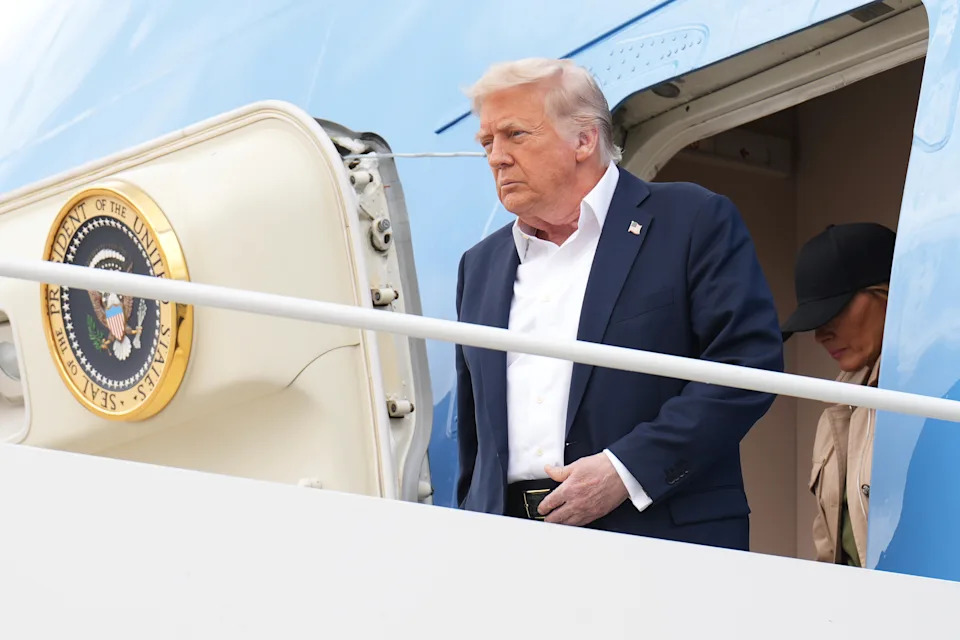
This week in Trumponomics: More tariff tantrums
Key Points
- Trump's Tariff Threats Continue: President Trump delayed the July 9 deadline for trade deals to August 1 but introduced new tariff threats, ranging from 20% to 40% on imports from countries like Japan, South Korea, and Indonesia, with higher rates for transshipped goods.**
- Unexpected Tariff Hikes: Surprising markets, Trump announced a 50% tariff on Brazilian imports linked to political conditions, a 50% tariff on copper, a potential 200% tariff on pharmaceuticals, and increased tariffs on Canadian, Mexican, and EU imports.**
- Rising Import Taxes: According to the Yale Budget Lab, recent changes will raise the effective import tax from 15% to nearly 19%, a significant jump from the 2.5% average when Trump took office.**
- Economic Impact Looming: While the real economic effects of tariffs are not yet fully evident, upcoming corporate earnings and the July 15 inflation report may reveal cost increases in various sectors, potentially pushing inflation from 2.3% to 3.5%-4% by year-end.**
- Trump's Strategy: Trump's tariff policy appears to be a tool for leverage, rewarding allies, punishing adversaries, and maintaining headlines, with little regard for market stability, suggesting ongoing unpredictability in trade policy.**
Summary
President Trump continues to wield tariffs as a powerful policy tool, delaying a July 9 trade deal deadline to August 1 while introducing new, unexpected tariff threats that unsettled markets. These include 20%-40% tariffs on imports from countries like Japan and South Korea, a 50% tariff on Brazilian goods tied to political demands, and potential 200% tariffs on pharmaceuticals. The Yale Budget Lab estimates these changes will raise the effective import tax from 15% to 19%, far above the 2.5% when Trump took office. Despite minimal real-world economic impact so far, upcoming corporate earnings and the July 15 inflation report may reveal cost increases in sectors like clothing and electronics, potentially driving inflation from 2.3% to 3.5%-4% by year-end. This prevents the Federal Reserve from cutting interest rates, fueling Trump's criticism of Fed Chair Jerome Powell, though his own trade policies are the root cause. Analysts warn markets not to underestimate Trump, as tariffs remain a preferred mechanism to address various issues, often prioritizing leverage over stability. With Trump's ability to adjust tariffs at will to reward allies or punish foes, the ongoing unpredictability suggests future trade deadlines will likely bring more surprises, maintaining a state of economic uncertainty.
yahoo
July 12, 2025
Stocks

Roblox Game-Buying Frenzy Is Turning Teens Into Millionaires
Key Points
- Blue Lock: Rivals Success: A 19-year-old developer created the Roblox game Blue Lock: Rivals in just three months, which attracted over 1 million simultaneous players and generated $5 million monthly for Roblox Corp. before being sold for over $3 million to Do Big Studios.**
- Roblox Ecosystem Shift: Roblox's ecosystem is evolving with policy changes allowing easier game ownership transfers, leading to a surge in acquisitions, with seven of the top 15 earning games in June being acquired from original creators.**
- High-Value Transactions: Major deals include Do Big Studios acquiring a stake in Grow a Garden, which broke records with over 21 million simultaneous players, and Voldex Entertainment purchasing Brookhaven RP for a significant undisclosed sum.**
- Creator Earnings: Roblox's top 10 developers earned $36 million each in the year through March, with the company potentially paying out over $1 billion to creators in 2024, reflecting a highly lucrative market for young developers.**
Summary
A 19-year-old developer created Blue Lock: Rivals, a soccer-themed Roblox game with an anime aesthetic, in just three months, attracting over 1 million simultaneous players and generating $5 million monthly for Roblox Corp. The game was sold to Do Big Studios for over $3 million. Roblox, a platform for young creators, has seen a shift in its ecosystem, with policy updates facilitating game ownership transfers. This has spurred a wave of acquisitions, with companies like Do Big and Voldex Entertainment buying popular titles such as Grow a Garden and Brookhaven RP for significant sums. Seven of the top 15 earning games in June were acquired from original owners, per Naavik’s research. Roblox’s top developers earned $36 million each in the year through March, with projections of over $1 billion in creator payouts for 2024. The platform’s capitalist nature, as noted by Voldex’s CEO, encourages economic success for creators, often anonymous teens, who trade or sell games via platforms like Discord. This burgeoning market also sees developers flipping games based on fleeting trends, with some deals reaching seven or eight figures, highlighting Roblox’s growing financial potential for young talent.
yahoo
July 12, 2025
Stocks
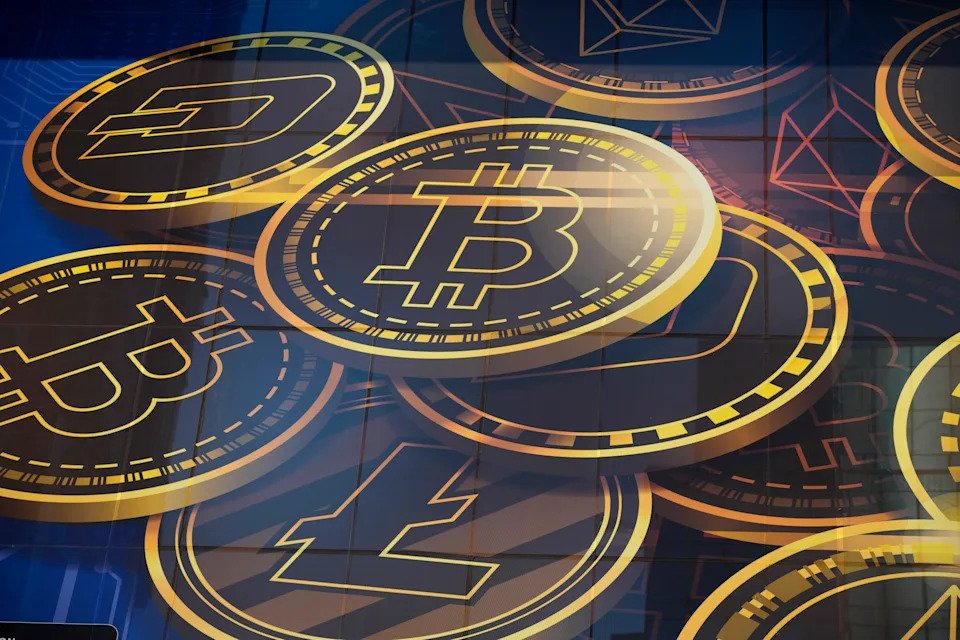
Bitcoin surges to new highs above $118,000 as investors go risk-on
Key Points
- Bitcoin (BTC-USD) reached a new all-time high, surpassing $118,000, driven by bullish momentum in risk assets.
- Bitcoin's price surge aligns with Nvidia (NVDA) hitting a $4 trillion valuation, reflecting a strong correlation with tech stocks.
- Year-to-date, Bitcoin has risen approximately 21%, supported by crypto-friendly policies from the Trump administration.
- Institutional inflows and corporate participation, including companies like MicroStrategy (MSTR) and GameStop (GME), are fueling the rally.
- Upcoming "Crypto Week" in Congress, starting July 14, could shape regulatory frameworks and further boost institutional confidence in crypto.
Summary
Bitcoin (BTC-USD) soared to a record high above $118,000, riding a wave of bullish sentiment across risk assets, coinciding with Nvidia (NVDA) reaching a $4 trillion valuation. This surge underscores Bitcoin's strong correlation with tech stocks, as noted by crypto analyst Nic Puckrin. Year-to-date, Bitcoin has gained about 21%, bolstered by pro-crypto policies from the Trump administration, including plans for a strategic Bitcoin reserve. The rally is driven by sustained institutional inflows and growing corporate adoption, with companies like MicroStrategy (MSTR) and GameStop (GME) adding Bitcoin to their balance sheets. Meanwhile, Trump Media & Technology Group (DJT) filed for a Bitcoin-heavy ETF. As Congress prepares for "Crypto Week" on July 14 to debate key legislation like the GENIUS Act for stablecoins, favorable outcomes could further accelerate institutional investment. Trading platforms like Robinhood (HOOD) and Coinbase (COIN) saw gains, while Circle (CRCL), issuer of USDC, jumped 2% amid a 500% rise since its IPO. Analysts suggest that a supportive regulatory framework could solidify Bitcoin's status as a macro asset and enhance confidence in compliant crypto platforms.
yahoo
July 11, 2025
Stocks
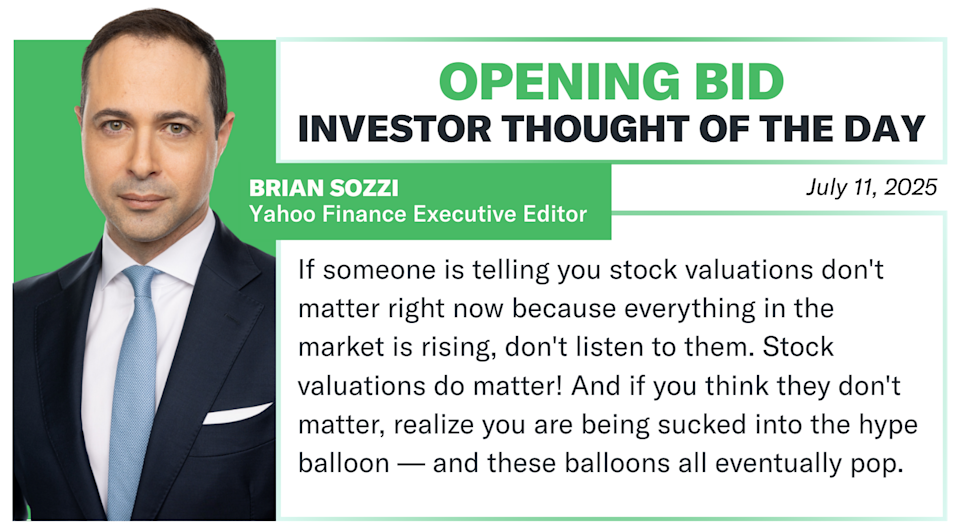
Vietnam Surprised by Trump Tariff Decision, Seeks Lower Rate
Key Points
- Vietnam's leadership was surprised by US President Donald Trump's announcement of a 20% tariff, as they had anticipated a lower rate in the 10%-15% range.
- Following the announcement, Vietnam's party chief To Lam instructed negotiators to continue efforts to reduce the tariff rate.
- The Vietnamese government has limited public discussion of the tariff in state media, with instructions to avoid speculative content until a consensus is reached with the US.
- Vietnam is balancing relations with the US and China, its largest trading partner, while addressing US demands to prevent transshipment of Chinese goods through Vietnam.
- Despite the tariff uncertainty, foreign investors view the 20% rate as a favorable deal, with Vietnamese stocks reaching a three-year high.
Summary
Vietnam was taken aback by US President Donald Trump’s announcement of a 20% tariff on its exports, having expected a rate between 10% and 15%. Following a call with Trump, Vietnam’s party chief To Lam directed negotiators to push for a lower rate, as the higher figure was unexpected. The Vietnamese government has kept public discussion minimal, with state media instructed to avoid speculative content until an agreement is finalized with the US. Vietnam, a major export hub with a significant trade surplus with the US, is navigating complex relations with both Washington and Beijing, its largest trading partner. The US has pressed Vietnam to curb the rerouting of Chinese goods to evade higher tariffs, prompting Hanoi to tighten regulations on origin-of-goods fraud. Despite the uncertainty, foreign investors remain optimistic, with Vietnamese stocks hitting a three-year high, interpreting the tariff as a relatively good deal. Meanwhile, Vietnam continues to strengthen economic ties with China, including plans for a railway link, underscoring its delicate balancing act. Neither side has released detailed plans on how the 20% tariff or a 40% levy on transshipped goods will be enforced, leaving many questions unanswered as Trump considers broader tariffs of 15%-20% on other trading partners.
Josh Wingrove and Nguyen Dieu Tu Uyen
July 11, 2025
Stocks

Markets Embolden Trump on Tariffs, Stoking Fear of Overreach
Key Points
- Trump's Tariff Threats: President Trump has threatened to increase the universal tariff rate to 20%, doubling the current baseline, and proposed a flat tariff of 15-20% on all trading partners, surpassing the existing 10% rate.**
- Market Reactions: Financial markets showed mixed responses with declines in S&P 500 and European stock contracts, a slight rise in the dollar, and gains in export-dependent Asian equities despite the tariff news.**
- Market Complacency: Analysts and figures like Jamie Dimon of JPMorgan Chase warn that markets are too complacent about the risks of escalating trade frictions, with record highs and low volatility indices suggesting over-optimism.**
- Potential Economic Impact: Higher tariffs could lead to equity declines, weaker demand, and higher costs for imported goods, potentially impacting global economic growth, especially in regions like Southeast Asia.**
Summary
President Donald Trump has intensified trade tensions by threatening to raise the universal tariff rate to 20%, exceeding the current 10%, and proposing a 15-20% flat rate on all trading partners. This follows new levies on Canada and a steep 50% tariff on Brazil. Despite these threats, Trump cites record stock market highs as evidence of policy success, though financial markets displayed mixed reactions with declines in S&P 500 and European stocks, a stronger dollar, and gains in Asian equities. Analysts warn of market complacency, with figures like Jamie Dimon highlighting the risks of escalating trade frictions. Low volatility indices and record highs suggest markets may have priced in an overly optimistic outlook, ignoring potential economic fallout. Higher tariffs could trigger equity declines, weaker demand, and increased costs for imported goods, posing risks to global growth, particularly in export-heavy regions like Southeast Asia. While some fear an economic blow, inflation in the US remains contained, and the full impact of these tariffs—whether implemented or merely threats to gain concessions—remains uncertain. Market strategists advise caution, noting the policy overload and constant updates create a confusing environment for investors.
Katia Dmitrieva and Swati Pandey
July 11, 2025
Stocks

Trump tariffs live updates: Canada struck with 35% tariffs, Trump floats higher blanket rates
Key Points
- Trump's Tariff Agenda: President Trump is implementing significant tariffs, including a 35% tariff on Canadian goods starting August 1, citing fiscal retaliation and national security concerns like Fentanyl crossings and dairy duties.**
- Global Impact: Tariffs range from 15%-20% on most trading partners, 50% on Brazilian goods due to political issues, and 50% on copper imports, with a potential 200% tariff on pharmaceuticals looming.**
- Specific Country Deals: Vietnam faces a 20% tariff with a higher 40% on transshipped goods, while the EU is negotiating a 10% universal tariff with sector exemptions.**
- Market Reactions: Copper traders are shifting focus to Chinese buyers to offload metal before U.S. tariffs hit, while companies like Antofagasta see potential opportunities in stalled U.S. projects.**
- Political Fallout: Brazil's President Lula faces political and economic challenges with Trump's 50% tariffs, potentially using resistance as a strategy ahead of the 2026 election.**
Summary
President Trump is aggressively pursuing his tariff agenda, announcing a 35% tariff on Canadian imports starting August 1, citing issues like Fentanyl crossings and trade deficits, alongside broader tariffs of 15%-20% on most trading partners. Specific measures include a 50% tariff on Brazilian goods due to political grievances involving former President Bolsonaro, and a 50% tariff on copper imports, impacting global metal markets as traders pivot to Chinese buyers. Vietnam faces a 20% tariff, with higher rates for transshipped goods, while the EU negotiates a 10% rate with exemptions. These policies have sparked varied reactions, from economic uncertainty and potential retaliation from countries like China and Brazil to opportunities for companies like Antofagasta with stalled U.S. projects. In Brazil, President Lula grapples with political and economic fallout, potentially leveraging resistance to Trump’s tariffs for domestic support ahead of the 2026 election. The tariffs introduce significant uncertainty into global trade dynamics and domestic economies.
yahoo
July 11, 2025
Stocks